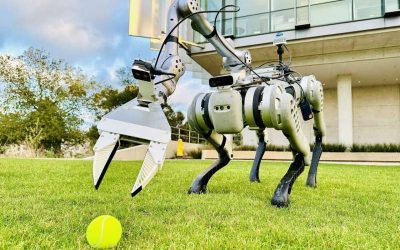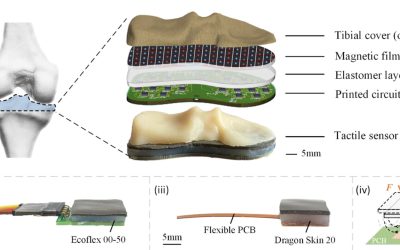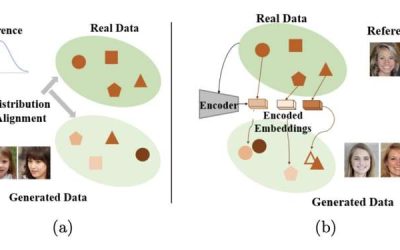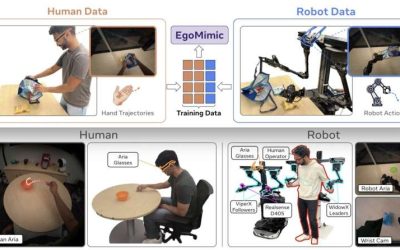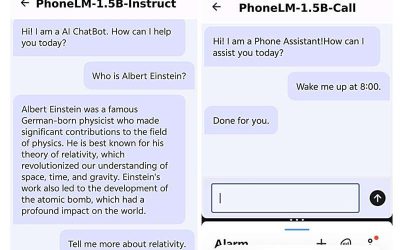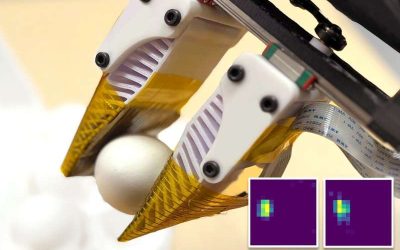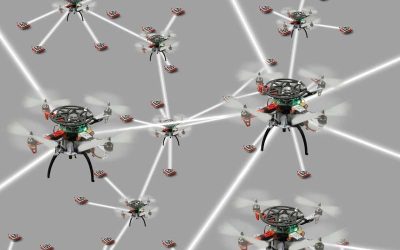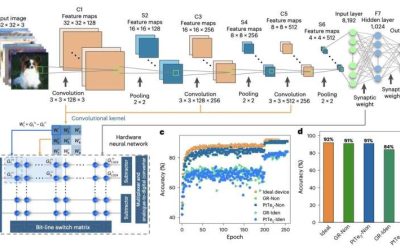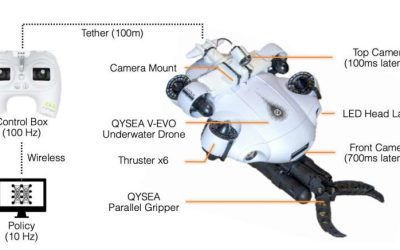Machine learning & AI
Imitation learning framework enhances quadruped robots’ loco-manipulation skills in the wild
Quadruped robots integrating manipulators could potentially tackle tasks that entail manipulating objects while swiftly moving around in their surrounding environment. These include tasks such as collecting the trash around the house, collecting specific objects and...
Soft e-skin utilizes magnetic fields to independently sense three-axis forces
Electronic skins (e-skins) are flexible sensing materials designed to mimic the human skin's ability to pick up tactile information when touching objects and surfaces. Highly performing e-skins could be used to enhance the capabilities of robots, to create new haptic...
Novel framework can generate images more aligned with user expectations
Generative models, artificial neural networks that can generate images or texts, have become increasingly advanced in recent years. These models can also be advantageous for creating annotated images to train algorithms for computer vision, which are designed to...
Novel framework can create egocentric human demonstrations for imitation learning
One of the most promising approaches to teaching robots how to complete manual tasks such as cleaning dishes or preparing food is known as imitation learning. End-to-end imitation learning typically entails training a deep learning algorithm on raw videos, images...
Shrinking AI for personal devices: An efficient small language model that could perform better on smartphones
Large language models (LLMs), such as Open AI's renowned conversational platform ChatGPT, have recently become increasingly widespread, with many internet users relying on them to find information quickly and produce texts for various purposes. Yet most of these...
Integrated multi-modal sensing and learning system could give robots new capabilities
To assist humans with household chores and other everyday manual tasks, robots should be able to effectively manipulate objects that vary in composition, shape and size. The manipulation skills of robots have improved significantly over the past few years, in part due...
A nervous system-inspired framework to deploy self-organizing robot swarms
The deployment of robot teams could allow humans to complete various real-world tasks faster and more efficiently. For instance, multiple co-operating robots could help to quickly find and rescue survivors of natural disasters or monitor pollution across large...
Unique memristor design with analog switching shows promise for high-efficiency neuromorphic computing
The growing use of artificial intelligence (AI)-based models is placing greater demands on the electronics industry, as many of these models require significant storage space and computational power. Engineers worldwide have thus been trying to develop neuromorphic...
Aquatic robot’s self-learning optimization enhances underwater object manipulation skills
In recent years, roboticists have introduced robotic systems that can complete missions in various environments, ranging from the ground to underground, aboveground and underwater settings. While several of these robots can grasp and move objects on the ground, the...


